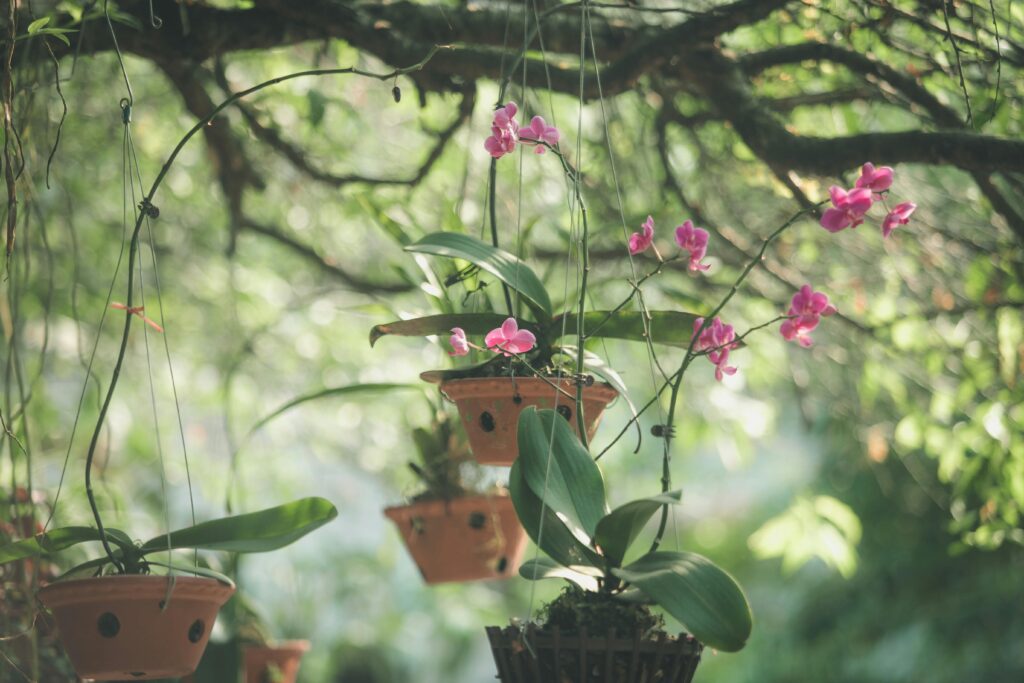Orchid Care
Orchid Care
What You’ll Need:
Essential Items |
Desirable Items |
|---|---|
| Orchid bark (fine or coarse grade) | Indoor Plant Food |
| Sphagnum Moss | Orchid Pot |

Care for orchids varies depending on species. In general, orchids need medium to bright light. In a home,
placement near a North or East facing window is ideal. Never expose your orchid to direct sunlight, this will cause burns and may damage your plant.
Temperatures need to be warm during the day (60-80°) and cooler at night. (8-15° Difference) Never expose your orchid to temperatures below 50 degrees or above 100 degrees. Fertilize and water regularly in spring and summer and less frequently in fall and winter. We recommend using orchid fertilizer, or African Violet fertilizer, both are great options for your orchid. Orchids generally like to be some-what rootbound. Repot no more than every two years to replace the soil that has decomposed. Use an orchid potting mix when repotting. For more specific needs see below for care of each individual species.
Dendrobium – Most dendrobiums like a strong life cycle with warm bright summers with plenty of fertilizer and regular water, and a cooler winter allowing the soil to become almost dry between waterings. Many hybrids flower in the spring and again in late summer.
Oncidium – Known as “dancing lady” orchids. They can handle bright to full direct sun. They flower during the fall months. With proper care the plant may bloom twice a year. Their flowers are not large, but they have a considerable number of flowers produced on the long branching flower spikes, creating a coudlike mass of color
Phalaenopsis – Also known as moth orchid. These are ideal houseplants. They flower during the winter and early spring months. They need cool nights and warm days. The beautiful blooms can last up to 4 months!
Paphiolpedilum – Or Lady’s Slippers are mostly ground dwellers so they require less light than others. They produce a single flower that resembles a slipper. The bloom lasts for 8 weeks or longer. Generally Paphiopedilums with solid green leaves prefer cooler growing conditions, while those with mottled leaves need more warmth.


